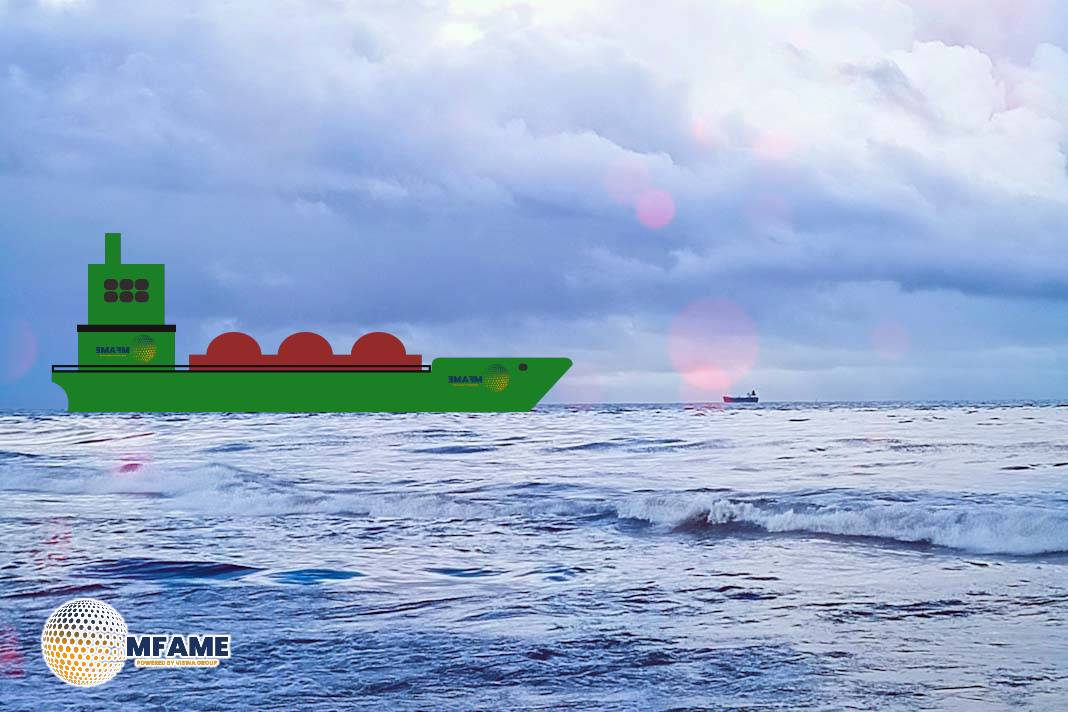This incident summary is based on a case study provided by Britannia P&I Club. It describes the fatal outcome of inadequate medical response aboard a bulk carrier and highlights significant gaps in safety procedures, supervision, and medical care related to hazardous fume exposure.
What Happened
On 12 November 2022, while a bulk carrier was sailing off the western coast of Africa, a deck cadet (DC), who had been onboard for approximately three months, was assigned to assist with repair work in the no. 5 cargo hold. During the task, the cadet stood near a vent from the no. 2 heavy fuel oil (HFO) tank port, which was emitting hydrocarbon fumes while the tank was being heated.
After the task concluded, the cadet reported discomfort. The next day, he experienced headaches and informed the chief officer, attributing the symptoms to fume inhalation. Over the following days, the cadet’s health declined, marked by vomiting, diarrhoea, reduced appetite, and general weakness. Despite efforts to monitor his condition and provide advice through a company medical contact, no immediate professional medical intervention was sought.
On 24 November, the ship’s master considered a medical disembarkation at Mauritius (ETA 28 November), but the cadet’s condition deteriorated rapidly. On 25 November, the cadet was found unresponsive in his cabin. Resuscitation efforts failed, and he was declared deceased.
Why It Happened
The incident occurred due to a combination of unsafe exposure, inadequate supervision, and poor medical response. The deck cadet was exposed to hydrocarbon fumes from a bunker tank vent while assisting with equipment handling near the no. 2 heavy fuel oil (HFO) tank port. Being new to shipboard operations and lacking experience, the cadet was unaware of the health risks associated with such exposure. The task was carried out without sufficient oversight, and there is no evidence that a formal risk assessment or permit-to-work process was followed for the hot work conducted in the cargo hold. If proper safety planning had been in place, the cadets’ inexperience and the proximity to hazardous venting could have been identified as risks, and alternative methods or personnel could have been assigned.
Medical mismanagement further contributed to the fatality. Despite initial complaints of discomfort and headache, the seriousness of the cadet’s condition was underestimated by senior crew members. Vital signs were not monitored, and the cadet’s illness was mistaken for minor seasickness. The chief officer, who was also the onboard medical officer, failed to follow the guidance outlined in the Safety Management System (SMS), including referring to the International Medical Guide for Ships or seeking radio medical advice from an authorized center such as CIRM. Instead, limited consultation was made with a company doctor through informal communication, which lacked adequate follow-up or documentation. Additionally, although the ship passed multiple ports with medical facilities, the option to divert was not considered until the cadet’s condition had deteriorated significantly, leaving insufficient time for effective intervention.
Actions Taken
The vessel’s management made delayed efforts to respond to the cadet’s deteriorating health. After initial complaints, the cadet was advised to rest in his cabin and was relieved of duty. Communication was established with the crewing department and a company medical contact via WeChat, through which light dietary recommendations were suggested.
When the cadet’s symptoms worsened, plans were initiated to arrange for a medical disembarkation in Mauritius, and a second officer was designated to accompany him ashore. Another cadet was assigned to monitor his condition every two hours, though he lacked medical training. Despite these actions, no formal medical advice was sought via radio, and vital sign monitoring was neither performed nor documented. A medical report form was submitted only after the cadet’s death, reflecting a failure to follow timely and structured medical procedures as defined in the company’s SMS.
Lessons Learned
- Ensure cadets and trainees receive thorough safety briefings on hazardous areas and substances. Assign an experienced crew to supervise new or junior personnel during operational tasks.
- Conduct thorough risk assessments and implement permit-to-work procedures before performing hot work or hazardous activities.s
- Monitor vital signs and maintain health records when a crew member reports an illness, and seek medical advice promptly via radio if symptoms are unclear or persistent.
- Use a trained officer, not another cadet, to monitor the condition of an unwell crew member.r
- Do not rely solely on informal or incomplete medical consultations for onboard health issues. Consider port deviation at the earliest sign of medical deterioration, even if symptoms appear mild.
- Familiarisation training should specifically cover risks related to fume exposure and toxic substances.s
- Follow the company’s Safety Management System consistently, especially for medical care protocols.
Did you subscribe to our Daily newsletter?
It’s Free! Click here to Subscribe!
Source: BRITANNIA P&I CLUB

















